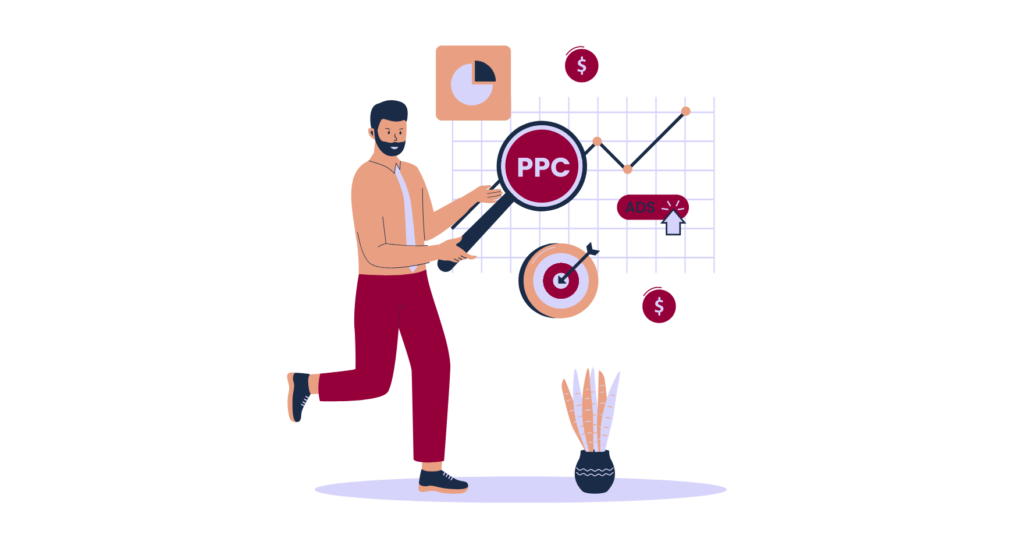
1. Clear Campaign Goals
- Define Objectives: Establish clear goals for your PPC campaigns, such as increasing website traffic, generating leads, boosting sales, or raising brand awareness.
- KPIs: Identify key performance indicators (KPIs) like Click-Through Rate (CTR), Conversion Rate, Cost Per Conversion, and Return on Ad Spend (ROAS) to measure success.
2. Thorough Keyword Research
- Identify Keywords: Use tools like Google Keyword Planner, SEMrush, or Ahrefs to find relevant keywords that your target audience is searching for.
- Long-Tail Keywords: Focus on long-tail keywords to target more specific, lower-competition search queries. These often have higher conversion rates.
- Negative Keywords: Create a list of negative keywords to avoid irrelevant clicks that waste your budget.
3. Ad Copywriting
- Compelling Headlines: Write attention-grabbing headlines that clearly convey the value proposition.
- Relevant and Clear: Ensure the ad copy is relevant to the keywords and provides a clear message or offer.
- Call to Action (CTA): Include a strong CTA that encourages users to take the desired action (e.g., “Buy Now,” “Learn More,” “Get a Quote”).
- Ad Extensions: Use ad extensions (sitelinks, callouts, structured snippets) to provide additional information and increase the visibility of your ad.
4. Landing Page Optimization
- Consistency: Ensure that the landing page is closely related to the ad content and fulfills the promise made in the ad.
- User Experience (UX): Optimize the landing page for a smooth user experience, with fast load times, clear navigation, and mobile responsiveness.
- Conversion Focused: Include clear CTAs, easy-to-fill forms, and trust signals (e.g., testimonials, certifications) to encourage conversions.
- A/B Testing: Continuously test different landing page elements (headlines, images, CTAs) to improve conversion rates.
5. Targeting and Segmentation
- Audience Targeting: Use demographic, geographic, and behavioral targeting to reach your ideal audience.
- Remarketing: Implement remarketing campaigns to re-engage users who have interacted with your website but didn’t convert.
- Device Targeting: Adjust bids and tailor ads based on the device users are searching on (mobile, desktop, tablet).
- Time and Location Targeting: Schedule ads to run at optimal times and in specific locations where your audience is most active.
6. Budget Management
- Set Budget Limits: Establish daily and monthly budget caps to control your spending.
- Bid Strategies: Choose the appropriate bidding strategy (manual bidding, automated bidding) based on your campaign goals.
- Monitor and Adjust: Regularly monitor your ad spend and adjust bids or budgets based on performance data to maximize ROI.
7. Ad Testing and Optimization
- A/B Testing: Continuously test different ad variations (headlines, descriptions, CTAs, images) to identify what performs best.
- Quality Score: Optimize your ads and landing pages to improve Google Ads Quality Score, which can lower costs and improve ad positions.
- Performance Analysis: Regularly analyze metrics such as CTR, conversion rates, and cost per conversion to identify areas for improvement.
8. Tracking and Analytics
- Conversion Tracking: Set up conversion tracking to measure actions taken on your site (e.g., purchases, form submissions).
- Google Analytics Integration: Integrate your PPC campaigns with Google Analytics to gain deeper insights into user behavior and campaign performance.
- Attribution Models: Understand and use different attribution models to credit conversions accurately and optimize campaigns accordingly.
9. Competitor Analysis
- Monitor Competitors: Analyze competitor ads, keywords, and landing pages to identify opportunities and gaps in your strategy.
- Competitive Bidding: Adjust bids based on competitor activity to ensure your ads remain competitive in the auction.
10. Legal and Ethical Considerations
- Compliance: Ensure your ads comply with the advertising policies of the platform you’re using (e.g., Google Ads, Bing Ads).
- Transparency: Be transparent in your ad copy and landing pages, avoiding misleading claims or deceptive practices.
